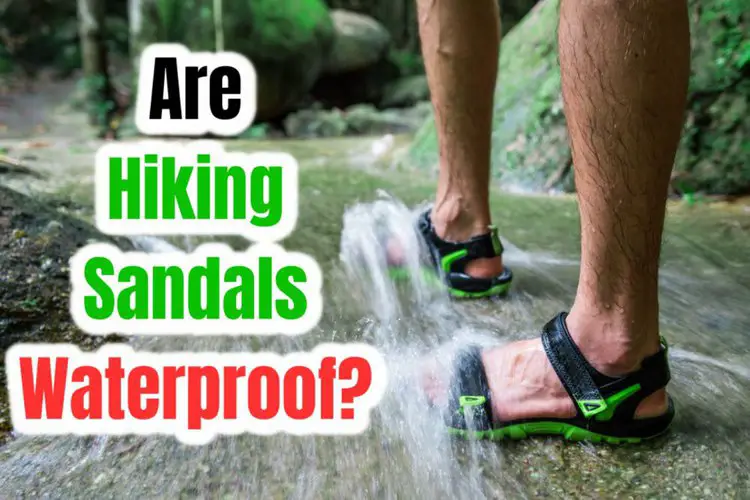When it comes to hiking, having the right footwear is essential for a comfortable and enjoyable experience.
While hiking boots are often the go-to choice for many hikers, hiking sandals have become increasingly popular in recent years due to their lightweight, breathable design.
However, one common question that arises is whether hiking sandals are waterproof. It’s important to understand that while some hiking sandals are marketed as “waterproof,” the reality is that they are not completely impervious to water.
With their open design, it’s impossible to completely seal out water, which means that hiking sandals cannot provide the same level of protection from water as hiking boots.
In this article, we’ll explore why hiking sandals are not fully waterproof, what types of hiking sandals offer water resistance, and tips for keeping your feet as dry as possible while wearing hiking sandals.
Key Takeaways:
- While hiking sandals are not completely waterproof, they do have some water-resistant features that can help keep your feet dry in wet conditions.
- Choosing the right materials for your hiking sandals can minimize the amount of water that enters your sandals and help prevent blisters, odors, and other discomforts.
Contents [hide]
Hiking sandals may not be fully waterproof, but they can keep your feet dry to a certain extent
While hiking sandals may not be completely waterproof, they do have some water-resistant features that can help keep your feet dry in wet conditions.
Some hiking sandals are designed with water-resistant materials such as neoprene, Gore-Tex, or synthetic fabrics that repel water to some extent. These materials can help keep your feet dry when hiking through shallow streams or crossing wet terrain.
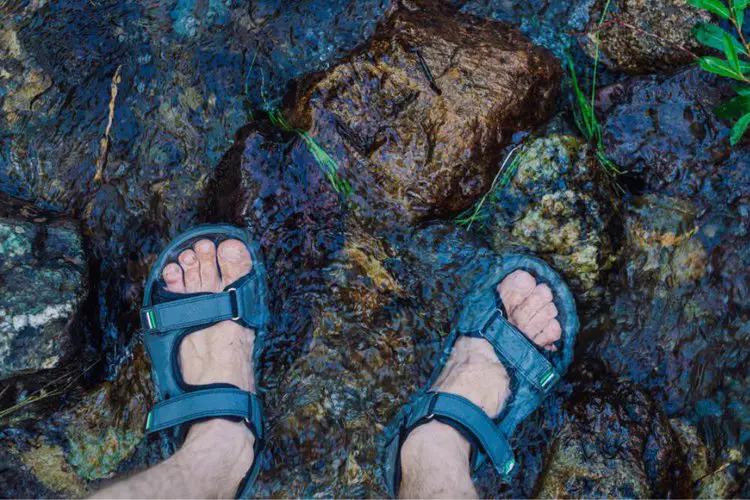
Moreover, the open design of hiking sandals can actually help water drain out of the shoe more easily, allowing your feet to dry more quickly after crossing a stream or getting caught in a rain shower.
This design also promotes air circulation, which can help prevent your feet from sweating and feeling damp.
However, it’s important to note that hiking sandals may not be the best option for prolonged exposure to wet conditions or when hiking in colder temperatures.
In these situations, you may want to consider wearing waterproof hiking boots that provide better protection against water and cold temperatures.
In summary, hiking sandals can have some water-resistant features that can help keep your feet dry in certain wet conditions.
However, the open design of hiking sandals means that they are not completely waterproof. Prolonged exposure to wet conditions or cold temperatures may require the use of waterproof hiking boots instead.
How to choose good hiking sandals that keep your feet as dry as possible?
While hiking sandals are not typically waterproof, there are certain types of hiking sandals that can still keep your feet as dry as possible during your outdoor adventures.
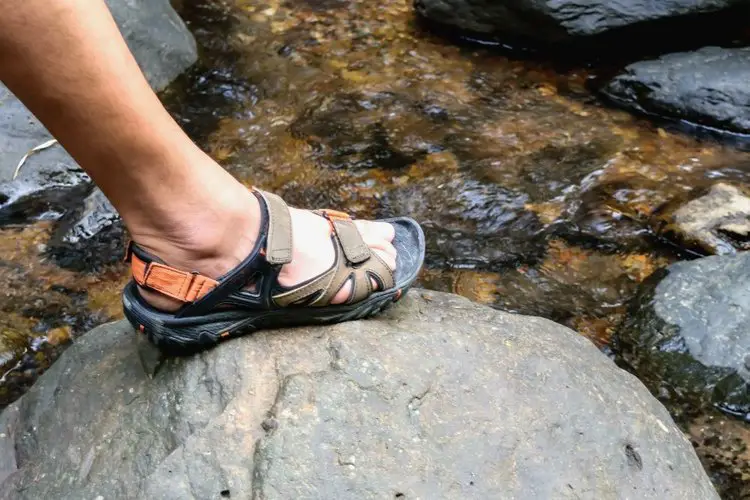
By choosing the right materials, you can minimize the amount of water that enters your sandals and help prevent blisters, odors, and other discomforts.
In this section, we’ll explore some tips on how to choose hiking sandals that are best suited for wet conditions and how to maintain them for optimal performance.
The material of the hiking sandals plays a significant role in keeping your feet as dry as possible.
Look for hiking sandals made from synthetic materials, such as polyester or nylon, or those with quick-drying mesh.
These materials are water-friendly and dry quickly, which helps keep your feet dry. On the other hand, materials like leather or suede are more likely to absorb water and take longer to dry, making them less suitable for hiking in wet conditions.
Last update on 2023-11-11 / Affiliate links / Images from Amazon Product Advertising API
Some hiking sandals may also come with water-resistant coatings or treatments, such as Teflon or Gore-Tex. These coatings can help repel water and keep your feet dry, but they may come at a higher price.
In general, it’s best to avoid cotton-based materials as they tend to hold moisture, which can make your feet feel damp and uncomfortable.
Some tips to help keep your feet as dry as possible while wearing hiking sandals
Wear appropriate socks
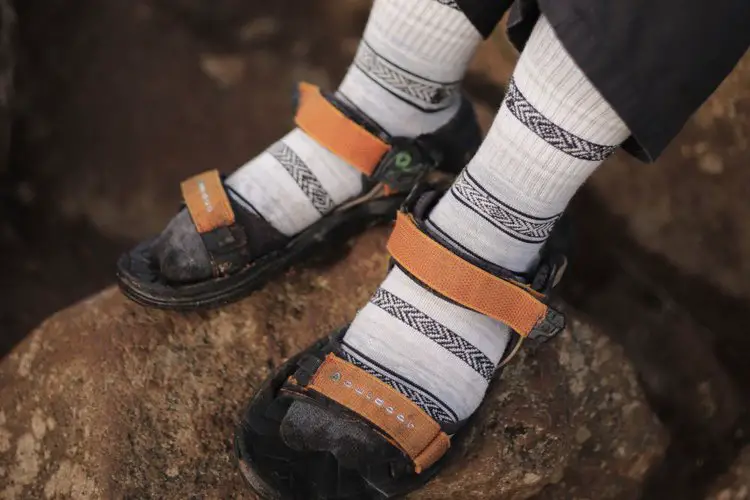
Choose socks made with quick-drying and moisture-wicking materials, such as merino wool or synthetic blends.
Avoid cotton socks, as they tend to retain moisture and can leave your feet feeling damp and uncomfortable.
- MAKE HIKING A COMFORTABLE EXPERIENCE These Merino wool hiking socks are built to provide you with...
- ITCH FREE MATERIAL These wool hiking socks come blended with nylon to promote a comfortable, itch...
- KEEP YOUR FEET WARM DURING COLD WINTER HIKES With these hiking socks, women and men alike can enjoy...
Last update on 2023-11-11 / Affiliate links / Images from Amazon Product Advertising API
Use gaiters
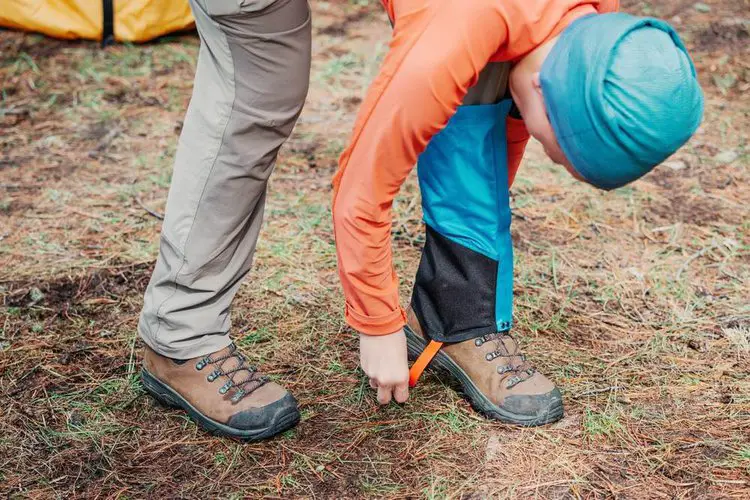
If you anticipate hiking in wet conditions, consider wearing gaiters to protect your feet and lower legs from moisture and debris.
Gaiters are worn over your hiking sandals and extend up to your calves, creating a barrier between your skin and the environment.
- PROTECTION; Pike Trail’s gaiters for men and women offer incredible protection from the elements;...
- ADJUSTABLE; It’s time to say goodbye to your old shoe gaiters and upgrade to a customizable...
- WON’T SLIP; We know that there’s nothing more annoying than having your hiking gaiters slip down...
Last update on 2023-11-11 / Affiliate links / Images from Amazon Product Advertising API
Take breaks to air out your feet
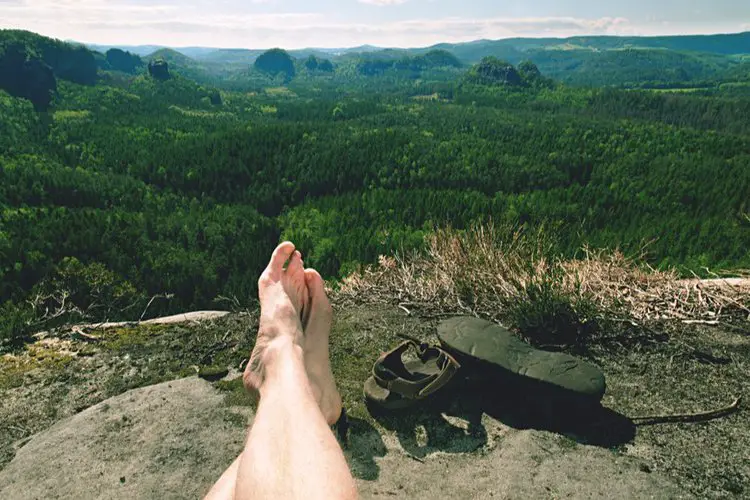
If your hiking sandals do get wet, take breaks to air out your feet and sandals. Remove your sandals and let your feet dry off before putting them back on.
You can also stuff your sandals with dry materials, such as leaves or newspaper, to help absorb moisture.
Use waterproofing sprays
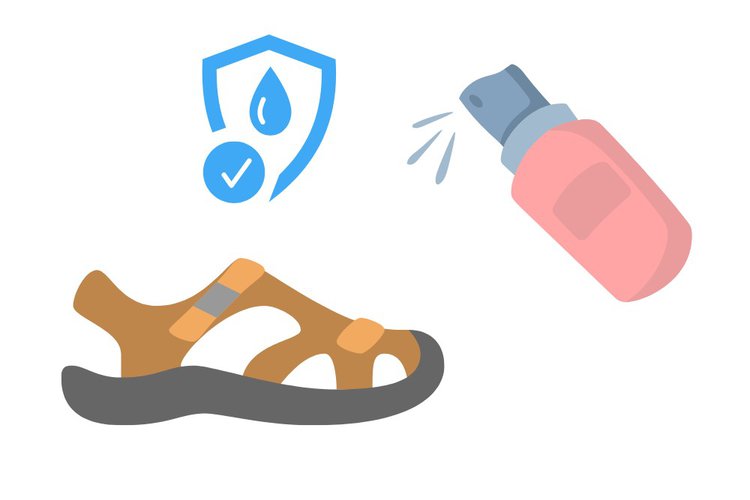
While not a perfect solution, applying a waterproofing spray to your hiking sandals can help repel water somehow and keep your feet drier.
Be sure to choose a spray that is appropriate for the material of your sandals.
- Ideal for tents, tarps, boots, hunting apparel, outdoor gear, boat covers and patio furniture
- Treated material stays odor free after drying
- Contains silicone
Last update on 2023-11-11 / Affiliate links / Images from Amazon Product Advertising API
Final thought
In summary, while hiking sandals may not be completely waterproof, they can still offer some water-resistant features that make them a great option for certain hiking conditions.
By choosing hiking sandals made with the right materials and taking appropriate precautions, you can help keep your feet as dry as possible during your outdoor adventures.
Ultimately, the decision to wear hiking sandals or hiking boots will depend on your specific hiking needs and preferences.
Regardless of which option you choose, be sure to prioritize footwear that provides comfort and protection for a safe and enjoyable hiking experience.

